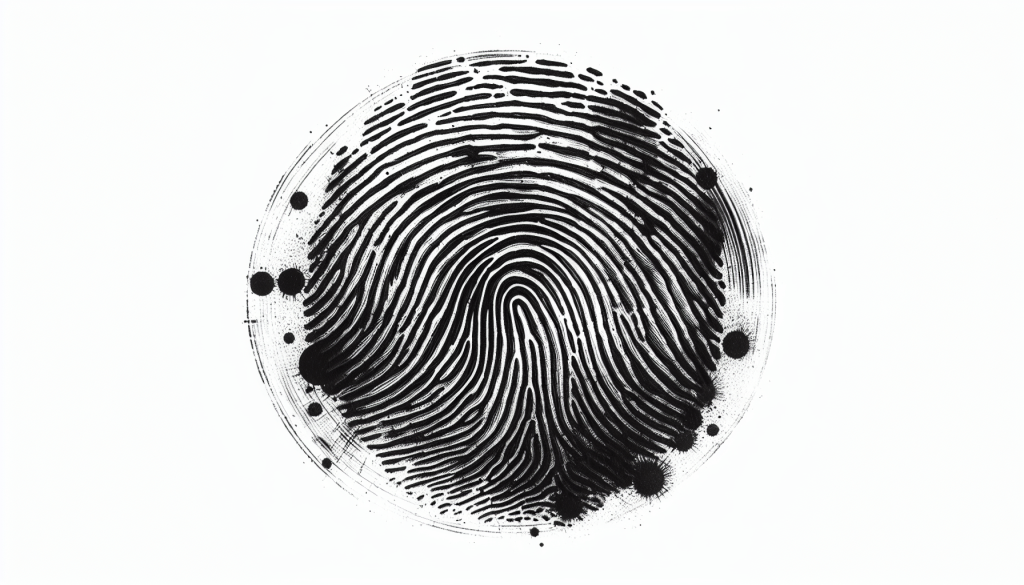Have you ever wondered if ink fingerprints are still accepted for background checks and other official purposes? The world is increasingly digitized, and you might be curious whether traditional methods like ink fingerprinting still hold their place in today’s technologically advanced society. Let’s explore this topic to understand if ink fingerprints still have a role, especially when it comes to important legal and procedural matters.

The Evolution of Fingerprinting
Early Methods of Fingerprinting
Fingerprinting has been a cornerstone of personal identification for over a century. Initially, the process involved pressing a person’s finger onto an ink pad and then onto paper, creating a physical record of the individual’s unique fingerprint pattern. This method, known as ink fingerprinting, was revolutionary in its time and became a standard for identification across the world.
Modern Digital Fingerprinting
Today, you have the option to undergo digital fingerprinting, which uses electronic scanners to capture your fingerprint patterns. This method is quick, clean, and is directly integrated into databases for more efficient processing. With technology evolving rapidly, you might assume that this has rendered ink fingerprinting obsolete. However, you’ll be surprised to learn about the nuances and enduring applications of traditional ink fingerprinting.
The Relevance of Ink Fingerprints Today
Legal Acceptance
Regardless of technological advancements, ink fingerprints are still legally accepted for background checks and various official purposes. Many government agencies, including law enforcement and immigration departments, still recognize and accept ink fingerprints for processing applications, conducting investigations, and verifying identities.
Legacy Systems and Compatibility
One reason ink fingerprints are still prevalent is the existence of legacy systems. Some older databases and record systems were initially designed for storing and processing ink-based fingerprints. This means that even with the availability of digital options, many institutions continue to accept ink fingerprints for compatibility reasons.

Comparing Ink and Digital Fingerprinting
Let’s make a quick comparison to see where each method stands today:
| Aspect | Ink Fingerprinting | Digital Fingerprinting |
|---|---|---|
| Convenience | Requires ink pads and paper | Quick and uses digital scanners |
| Cleanliness | Can be messy, involving ink stains | Clean and straightforward |
| Accuracy | Highly accurate with proper technique | Highly accurate with electronic precision |
| Speed | Time-consuming, requiring manual processes | Fast, with instant digital processing |
| Accessibility | Widely available, especially in rural areas | More commonly found in urban and developed regions |
| Compatibility | Still essential for legacy systems | Fully integrated into modern digital databases |
Pros and Cons of Ink Fingerprinting
Advantages
- Widespread Acceptance: Many official and legal processes still accept and sometimes prefer traditional methods.
- Cost: Ink fingerprinting is typically more affordable compared to the costs associated with purchasing and maintaining digital scanners.
- Accessibility: It’s more accessible in remote or underdeveloped areas where digital infrastructure might not be robust.
Disadvantages
- Processing Time: It can be slow compared to the instantaneous results of digital scans.
- Messiness: Handling ink can be messy and inconvenient.
- Storage and Maintenance: Physical records need to be properly stored and maintained, which can be a logistical challenge.
Historical Significance and Modern Use Cases
Criminal Investigations
Ink fingerprints have been instrumental in solving countless criminal cases over the years. Even today, they are collected at crime scenes, prisons, and during forensic investigations, as many jurisdictions still recognize and use them extensively.
Employment Background Checks
Certain employers still require ink fingerprinting, especially in industries that are regulated by federal or state laws, such as healthcare, education, and security. These industries often have stringent requirements for maintaining and verifying identity records.
Immigration and Citizenship
Immigration authorities across various countries continue to accept ink fingerprints as part of the identity verification process for visas, residency, and citizenship applications. This includes background checks to ensure that applicants meet all necessary legal requirements.
The Role of Agencies and Regulations
FBI and State Agencies
You might be interested to know that agencies like the FBI still accept ink fingerprints. In many cases, particularly for individuals outside the U.S. or in areas without digital facilities, ink fingerprints are the primary means of providing the necessary identification.
State Regulations
Different states have different regulations regarding fingerprinting. While digital methods are becoming increasingly popular, states with older infrastructures or those hard-pressed for funding might still rely on ink fingerprinting.
The Future of Fingerprinting
Adoption of Hybrid Models
The future likely involves a hybrid approach, where both ink and digital methods coexist. This ensures inclusivity, allowing people from all walks of life to be accurately identified regardless of their access to technology.
Training and Technology Integration
There will likely be an increased effort to train individuals and upgrade systems to accommodate both methods seamlessly. New platforms could emerge that integrate ink fingerprints into digital databases, ensuring that traditional methods remain relevant.
Potential Developments
With the advent of AI and machine learning, you could see innovations that enhance the digitization of ink fingerprints, making the process smoother and more integrated with modern databases. This hybrid model ensures no one is excluded due to technological limitations.
Conclusion
Ink fingerprints unquestionably retain their significance even in our digitized world. Whether it’s for background checks, employment, or immigration purposes, they remain a legally accepted and reliable method of identification. While digital fingerprinting offers numerous advantages like speed and cleanliness, the enduring utility of ink fingerprints means they will continue to be an important part of identification processes for many years to come.
So, the next time you’re required to submit your fingerprints, rest assured that whether it’s ink or digital, both methods are still very much in use and legally valid for various official purposes.
